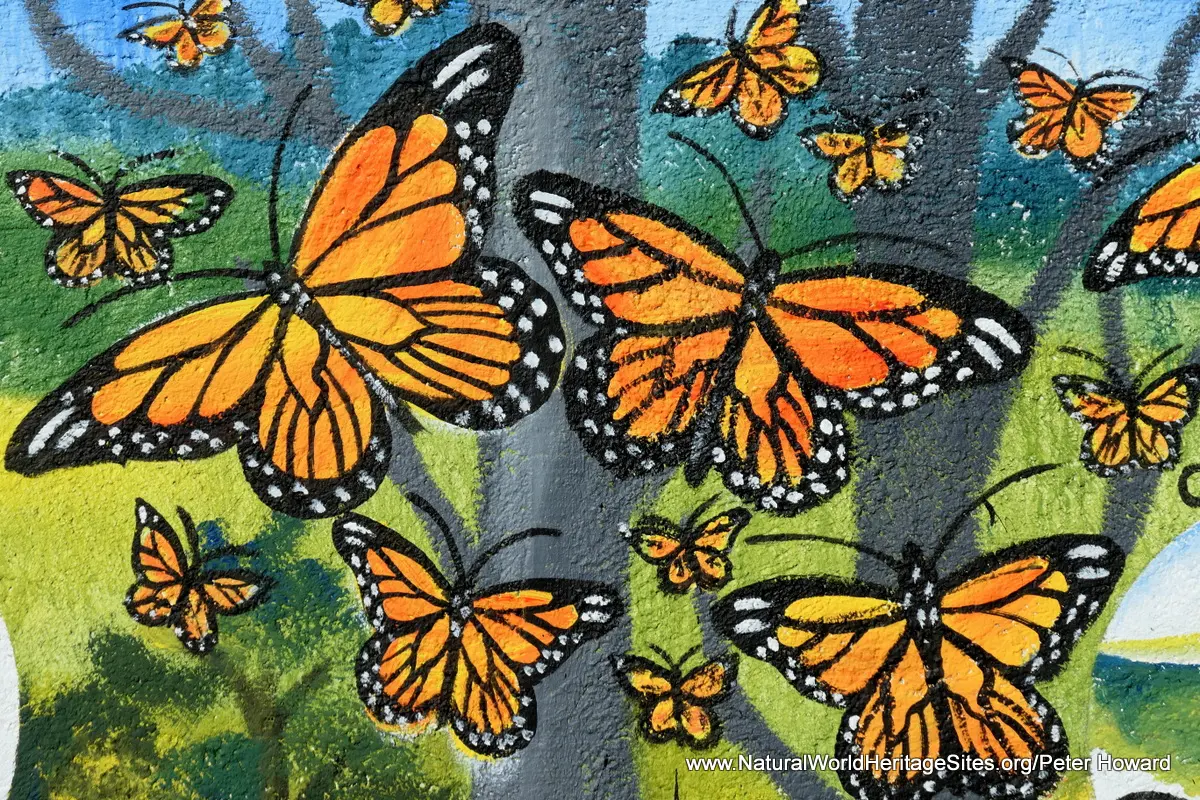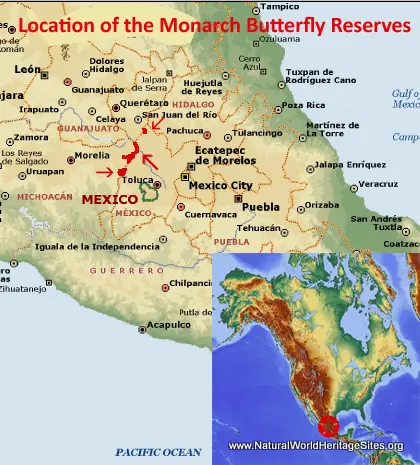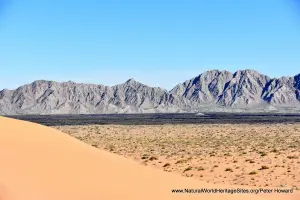EXPLORE Monarch Butterfly Biosphere Reserve with this slideshow, check the location map and get all the facts and information below.
For slideshow description see right or scroll down (mobile). Click to view slideshow
Location and Values: The Monarch Butterfly Biosphere Reserve is located in central Mexico, along the ridge of forested hills that marks the boundary between the states of Mexico and Michoacan. Each year many millions of monarch butterflies spend the winter in mass congregations, hanging in great clusters on the branches of the area’s Oyamel fir trees. They are here in such great numbers that their collective weight bends the branches they are hanging in, and turns the appearance of the forest orange. It is an awe-inspiring sight and truly one of nature’s great wonders.
These Monarch butterflies undertake the world’s longest insect migration, arriving here after a 3,500-4,000 km journey from Canada and the northern United States. The migration is all the more remarkable because it is undertaken by individuals with no previous experience of the route or destination, or any possibility of following others which have undertaken the journey previously. How they find their way remains a complete mystery.
The butterfly’s normal life cycle is between two and six weeks and there are usually four or five generations each year, with the northward migration completed as a ‘relay’ involving several generations of butterflies each undertaking a 1,500 km ‘stage’. The individuals which undertake the long (3,500-4,000 km ‘return’) leg southwards do so as sexually immature insects (in reproductive diapause) surviving in the torpor of hibernation for seven to ten months, before maturing in spring, and returning to lay their eggs at the end of the first northward ‘stage’, about 1,500 km from the overwintering site. Three or four generations later, by late August, the butterfly population has moved to the northernmost parts of its range, ready for the long migration south. And so the cycle is repeated.
Conservation Status and Prospects. According to IUCN’s Conservation Outlook Assessment (2017) the conservation status of the Monarch Butterfly Biosphere Reserve is ‘critical’. The IUCN report notes that there has been a dramatic decline in the number of butterflies over-wintering in the reserve over the past couple of decades, reaching an all-time low in 2013-14. This decline is attributed to three main factors, namely (1) deforestation and degradation of forest by illegal logging within the overwintering sites in México; (2) widespread reduction of breeding habitat and availability of the larval foodplant (common milkweed) in the United States (due to herbicide use and other agricultural/land-use practices); and (3) periodic extreme weather conditions throughout the butterflies’ range. The steep decline in butterfly populations at the overwintering sites has led some scientists to question whether the monarch butterfly migration can persist as one the world’s natural wonders.
Links:
Google Earth
UNESCO Official Website
IUCN Conservation Outlook
UNEP-WCMC Site Description
Slideshow description
The slideshow ‘tells the story’ of the Monarch Butterfly Biosphere Reserve with a portfolio of photos by Peter Howard from a visit in December 2019. The reserve protects eight of the 14 known overwintering colonies, accounting for about 70% of the total overwintering population. Only four of these are open to visitors, and the slideshow covers two of the most popular sanctuaries, at El Rosario and Sierra Chincua. The slideshow starts at El Rosario, showing the trail through the tall forest of Oyamel fir trees to the butterfly overwintering site. It is quite a strenuous uphill hike, for about an hour, to reach the place where butterflies are found. Visitors are kept at a discreet distance from the butterfly colonies in roped-off viewing areas, controlled by community-based guards. From these viewing sites visitors are able to marvel at the hanging masses of butterflies and (on a sunny day) watch clouds of butterflies take to the skies. The second part of the slideshow covers the Sierra Chincua site at the northern end of the reserve, where visitors can reduce the demands of the uphill hike by covering the first part of the trail to the butterfly colony on horseback.
Factfile
Website Category: Tropical & Sub-tropical Forests
Area: 135 km2
Inscribed: 2008
Criteria:
- Exceptional natural phenomenon (vii);





